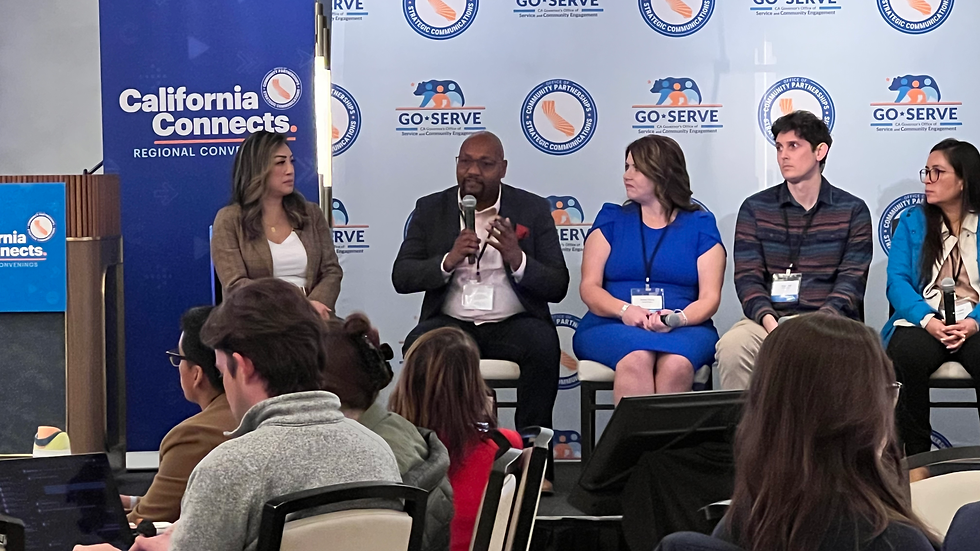Tech giants earned billions from pandemic, now they need to bridge digital divide for children
- The ONME Newswire

- Aug 6, 2020
- 4 min read
By Sunita Sohrabji/EMS Contributing Editor and Edited by ONME News
As school districts across the nation are realizing they cannot look to national leadership during this COVID-19 crisis to fill the growing equity gap, a panel of experts on school equity issues agreed at a July 31 Ethnic Media Services news conference. Communities have to turn inward and find the resources kids need to thrive.
With over 11 million students around the nation lacking lap tops, and many regions still reliant on antiquated DSL technology, panelists singled out the role of tech giants.
“Jeff Bezos (founder and chief of Amazon) is raking in incredible profits for his business” during the pandemic, as is Facebook, Google and Apple, noted Pedro Noguera, Dean of the Rossier School of Education at the University of Southern California (USC).
“They have a moral responsibility to bridge the digital divide but they don’t act. They should be held accountable by Congress to invest in access to the Internet. It is a basic right at this point in our history,” Noguera said.
Amazon announced its Q2 revenues on July 30. Despite the pandemic, the company doubled its net revenue from $2.6 billion for Q2 in 2019 to $5.2 billion in net revenue for the months of April, May, and June. Sales increased 40 percent to $88.9 billion in the second quarter, compared with $63.4 billion in second quarter 2019, said the company in a public statement.
Apple announced gross revenues of almost $58 billion, with $11 million in revenue.
In June, following the killings by law enforcement officers of George Floyd and Breonna Taylor, corporations pledged to spend billions of dollars on addressing structural racism and inequities, noted Dr. Shaun Harper, Executive Director of USC’s Race and Equity Center.
“Many of those tech companies made those announcements about the money that they were putting up without fully even knowing how they were going to spend those dollars,” Harper said.
“That is a lever that could be easily pulled. Just say to them, ‘Amazon, here’s how you could direct some of those resources that will help address some of the racial equity issues pertaining to schooling, particularly schools that primarily enroll mostly Black and brown students.’”
Harper noted that people of color, who are going to be impacted more heavily by decisions on how to safely open schools, have largely been left out of the discussion. So less attention has been paid to making sure schools have grief and trauma centers for students who have lost a family member, or personal protective equipment, testing, contact tracing and cleaning supplies for food service workers, janitors, and groundskeepers, roles held primarily by people of color.
Dan Domenech, Executive Director of the School Superintendents Association which represents all school superintendents across the nation, said his organization has asked Congress to spend $200 billion to bridge the digital divide, ensuring that students have laptops and quality access to the Internet. Increased costs for getting students back to learning work out to $490 per child, he said.
Senate Republicans have proposed a $70 billion package to aid school districts. Senate Democrats have proposed $175 billion. Domenech noted that — similar to a federal provision which mandates all households have telephone access — a separate provision could mandate that all households must have access to high speed internet.
The communications companies are unwilling to do this, said Domenech. “The solution here is to get the federal government to put up the money,” he said, noting that this was unlikely to happen before schools reopen, because the Senate July 31 recessed for summer vacation. The House has canceled its August recess until a relief bill is passed.
Eddie Valero, who serves on the Tulare County Board of Supervisors, spoke of two measures in the California state Legislature which would require communications companies to provide high-capacity broadband to all residents. Large portions of the state still have only DSL networks, which transfers data at much slower speeds, therefore making it incompatible for technologies like Zoom, the top choice for distance learning.
“These bills are game-changers for education,” said Valero, adding that the measures would focus on developing the infrastructure to deliver fiber broadband in currently under-served areas. “We have reached a pivotal moment in real time where we need to re-envision what school looks like for the future. We can no longer look back or stay stagnant,” stated Valero.
Mary Helen Immordino-Yang, Professor of Education, Psychology and Neuroscience at the Brain and Creativity Institute and Rossier School of Education at USC, said the pandemic’s isolation has over-stressed children’s brain systems. Children watching their parents struggle over the loss of a job or possible eviction become anxious themselves, but without the ability to interact with other people to help them through their crises.
Immordino-Yang advocated for a system which utilizes college-ready recent high school graduates who are not able to attend college this fall. “We could tap into those young people and help them to become tutors, teachers helpers, and education activists for the kids in their vicinity.”
“They need to feel not like ‘I’m waiting here isolated for the world to reopen,’ but instead that they have agency to actually build their community during this terrible time period.”
#TechGiants #Amazon #Apple #COVID19 #pandemic #school #digitaldivide #PedroNoguera #GeorgeFloyd #BreonnaTaylor #EMS #EthnicMediaServices #ShaunHarper #NorthernCalifornia #BayArea #SouthernCalifornia #newsheadlines #ONR #ONMETV #Blackpodcast #BlackNews #AfricanAmericanNews #CaliforniaNewsHeadlines









Comments